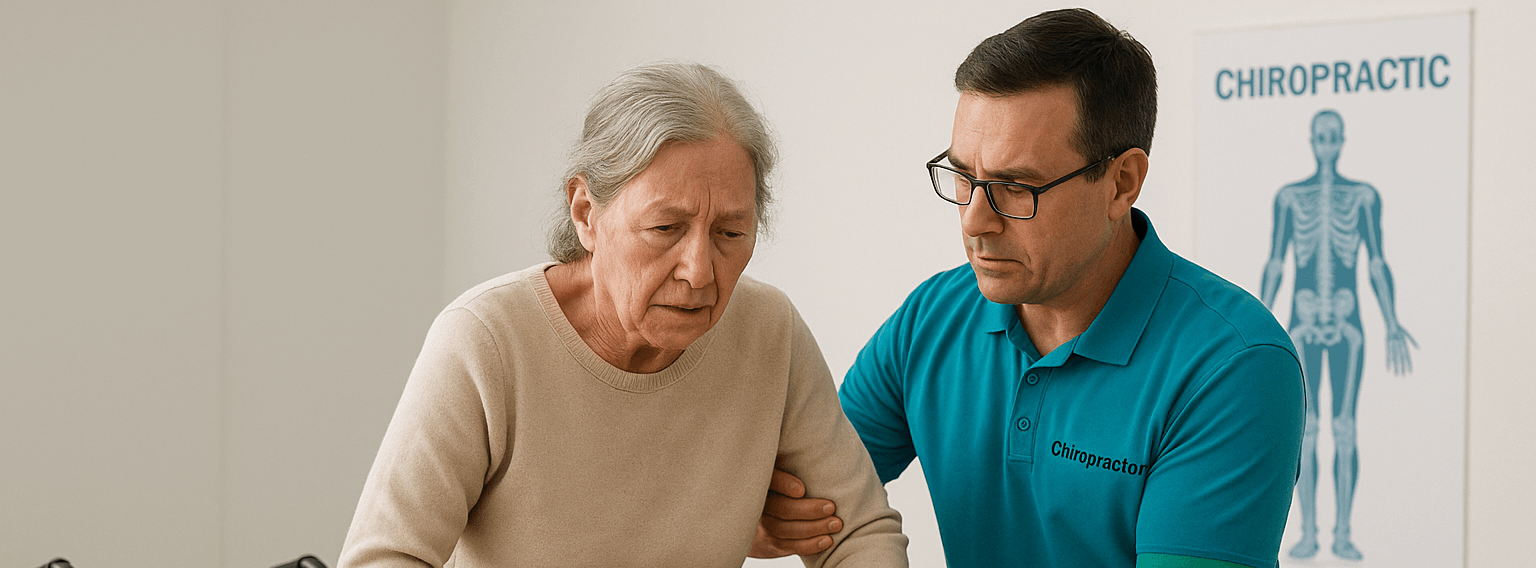Athletes often focus on strength, endurance, and power — yet one of the most overlooked performance factors is proper alignment. When the body falls out of structural balance, even the strongest muscles can’t perform efficiently, leading to compensation, fatigue, and injury. Alignment recovery is more than just a chiropractic buzzword — it’s the foundation that allows every movement to function as nature intended.
A qualified sports chiropractor for alignment recovery doesn’t just crack joints or relieve pain. They assess how each segment of your body interacts — from your spine and hips to your ankles and shoulders — ensuring that every structure supports optimal performance and recovery. Without this alignment-first approach, athletes risk building strength on a faulty foundation.
Jump To:
TLDR Quick Guide
- Alignment recovery ensures your body functions in balance before adding strength.
- Misalignment causes inefficient movement patterns and chronic injuries.
- A sports chiropractor restores proper structure, reducing strain and improving recovery speed.
- Strength without alignment leads to instability and plateaued performance.
- Prioritizing alignment creates lasting, injury-resistant athletic development.
The Hidden Power of Alignment in Athletic Performance
Most athletes train hard, but few train aligned. Structural misalignments — even minor ones — alter muscle recruitment patterns, forcing stronger muscles to compensate for weaker or restricted areas. Over time, this imbalance results in chronic strain, inflammation, and slower recovery times.
Alignment recovery ensures that your joints move in harmony, muscles fire correctly, and your nervous system communicates efficiently. It’s not about being flexible — it’s about being balanced. A sports chiropractor identifies these misalignments and corrects them before they compromise performance.
How a Sports Chiropractor Restores Alignment
Step 1: Structural Assessment
Using advanced postural and mobility tests, a chiropractor evaluates your entire kinetic chain — not just the site of pain. This comprehensive approach reveals how misalignments in one area (like the pelvis) can affect others (like the knees or lower back).
Step 2: Targeted Adjustments
Gentle, precise corrections restore motion to restricted joints, relieving pressure and improving symmetry. The goal isn’t just pain relief — it’s re-educating the body to maintain proper position naturally.
Step 3: Neuromuscular Re-Education
Alignment recovery isn’t complete without retraining your muscles. Chiropractors use corrective exercises and movement patterns to reinforce stability, helping your body hold adjustments longer and move more efficiently.
Step 4: Performance Integration
Once structural balance is achieved, athletes can safely increase strength and intensity. When alignment is stable, every rep, sprint, or swing produces greater power with less effort and risk of injury.
Why Strength Alone Isn’t Enough
You can build all the strength in the world, but if your foundation is off, it’s like building a skyscraper on uneven ground. Misalignments create unequal load distribution, making you more prone to overuse injuries, joint wear, and reduced athletic efficiency.
A sports chiropractor for alignment recovery ensures your foundation is solid before you add strength. This not only prevents future injuries but also enhances existing performance — helping athletes move better, recover faster, and perform at their peak without unnecessary setbacks.
Key Takeaways
- Alignment recovery is the foundation of all safe, effective athletic movement.
- Proper alignment improves nervous system communication and reduces strain.
- Building strength on misalignment leads to instability and chronic pain.
- A sports chiropractor focuses on long-term body balance, not quick fixes.
- Sustainable athletic performance starts with structural integrity, not just muscle power.
FAQs
What does alignment recovery mean in chiropractic care?
Alignment recovery refers to restoring your body’s natural structural balance so joints and muscles can function optimally. It involves correcting postural imbalances, joint restrictions, and compensatory patterns. The result is smoother movement, better stability, and reduced injury risk.
How is a sports chiropractor different from a regular chiropractor?
A sports chiropractor specializes in the biomechanics of athletic performance. They address not just pain but the way your muscles and joints interact under physical stress. Their focus is on optimizing motion, improving recovery, and preventing future injuries.
Can alignment recovery improve strength training results?
Yes. When your spine and joints are aligned, your muscles engage more efficiently. This leads to better strength gains, improved stability, and lower risk of overcompensation or strain during workouts.
How often should athletes see a sports chiropractor?
Frequency depends on the individual’s sport, training load, and recovery needs. Many athletes benefit from maintenance visits every 2–4 weeks. Regular care ensures your body remains aligned as training intensity changes.
Is alignment recovery only for injured athletes?
Not at all. Alignment recovery is both preventive and corrective. Even healthy athletes use it to maintain peak form, enhance performance, and avoid imbalances before they lead to pain or injury.






